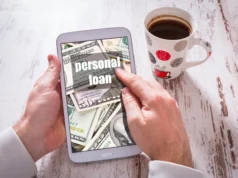Why Loans and Investments Get Mixed Up
A fast personal loan Singapore may seem like a savior and a curse. On the one hand, it addresses emergency cash problems—hospital bills, car repairs, or paying off credit card debts. On the other, it lures individuals into borrowing and investing in the hope that the market returns will outdo loan interest. It is somewhere in between the truth. Investments and personal loans are not mutually exclusive provided the lines are well established.

The Practice of Personal Loans
The personal loans in Singapore are designed to have a fixed term, fixed monthly payments, and fixed interest rates depending on your credit ratings. They also have an expiry date as opposed to revolving credit lines. This arrangement can assist individuals in bringing sanity to unorganized financial conditions.
Why Speed Is the Selling Point
Quick approval is important when you are in a hurry. Rarely does a sudden emergency sit back and wait until paperwork is done and approvals are made. That is why banks and licensed lenders drive the speed angle cash in days, sometimes hours. And caution should never be substituted by haste.
Short-Term Needs That Justify Loans
There are costs that just cannot be deferred.
Medical emergencies.
Education fees.
Borrowing to avoid higher-interest traps.
Daily living repairs, such as automobile repairs or house repairs.
The Red Line
It is hard to regret trying to purchase holidays or indulge in luxury by borrowing money. When the loan is not addressing an actual issue or lowering the expenditure on higher costs, then it turns into financial dead weight.
The Collision of Loans and Investments
Investments are made on patience. Loans require high payments on a monthly basis. It is the natural mismatch: loans decrease cash flow, and investments require regular contributions to increase. Here is a point at which most beginners falter.
The Borrow to Invest Game
Taking a personal loan to catapult into stocks or ETFs can seem like a good idea. When the market gives you 10 percent and the loan cost is 6 percent, you are making money on the difference, right? In theory, yes. In reality, markets swing. When they fall 15 percent and you are stuck with the payments, you lose on both ends. That is economic whiplash that not many can endure.
Building a Balanced Plan
The more intelligent way is segregation. Short-term fires are dealt with by loans. Investments handle long-term growth. It is a disaster when they are mixed without a clear strategy.
Step One: Stabilize
Clear or restructure expensive debt first. As long as a loan lowers your total interest expense, you are making some headway. As soon as the cash flow is stabilized, you can add layers of investments to the plan.
Step Two: Allocate Wisely
Maintain three or six months of costs in liquid savings. Invest money that you will not need in a period of five years. This helps you to avoid cases of having to sell ETFs at a loss merely to pay off a loan.
The ETF Advantage for Long-Term Investors
ETFs spread risk across many companies and markets. They are geared towards accumulation. They also do not require round-the-clock observation as compared to single stocks. This causes them to have a newcomer approach to wealth acquisition after loan debts are contained.
Waiting Is the Cost of Entry
ETFs have no secret sauce of glamour. It’s compounding. Fifty cents a month invested over a year becomes serious money in the form of dividends. But the one requirement? Time. Neither time nor loan payments go together when your budget is already stretched.
The Role of Stocks in the Picture
Stocks may have greater upside than ETFs. But they strike even more on the downside. Unless you are dealing with a loan simultaneously, the volatility of individual stocks can be an unnecessary burden. It does not mean never to buy stocks. It implies that you should start small and only after you feel financially stable.
Discipline Transfers Over
Interestingly, the habit of making a loan payment monthly creates a habit that is similar to investing. Provided that you were able to make repayments on some kind of a schedule, it feels comfortable to invest that same sum of money into stocks or ETFs after the loan is paid off.
It seems liquidity matters more than most people realize.
Loans put you in bondage. Liquid assets, ETFs and stocks cannot be cashed in during a recession. That is why you can’t afford to skip your emergency fund. Without a buffer, you can find yourself taking loans to cover emergencies as your portfolio is being pounded into dust.
Avoiding Forced Sales
The golden rule: never invest money that you are likely to need in the near future. Forced selling in a poor market cycle is worse than any loan interest you save.
Psychological Weight of Loans vs. Investments
Debt is heavy. It changes behavior even when the numbers make sense on paper. Others do not want to read statements. Others panic when the market declines, as they are afraid of not being able to make repayments. Investments require calm. Debt adds noise.
Peace of Mind Has Value
A smaller portfolio that is free of debt is comforting compared to a large one that is burdened by debt. Novices do not usually give this psychological fact enough attention until they experience it.
Practical Steps for Beginners Balancing Both
Assess your short-term needs honestly.
Where a loan is required, shop around and find the best effective interest rate.
Select the repayment period that is appropriate to cash flow, rather than simply the cheapest overall cost.
Build an emergency fund alongside repayments.
Not until loan repayments are predictable should aggressive investing be undertaken.
Start with ETFs for steady growth. Add individual stocks later if comfortable.
Invest the sum spent on repayment of loans after clearing the debts.
Closing Thoughts
Investments should never be on the wrong side of a loan. But neither must it pretend to be free investing capital. Treat it as a bridge for urgent needs, not a shortcut into markets. Stabilize it, then pivot into ETFs and stocks with patience.
Swift personal loan Singapore may purchase time and space, but not discipline. The actual magic occurs when there is debt clearing, increased contributions and compounding. Safety first, growth second—that is the proportion that keeps investors alive in the long run.










